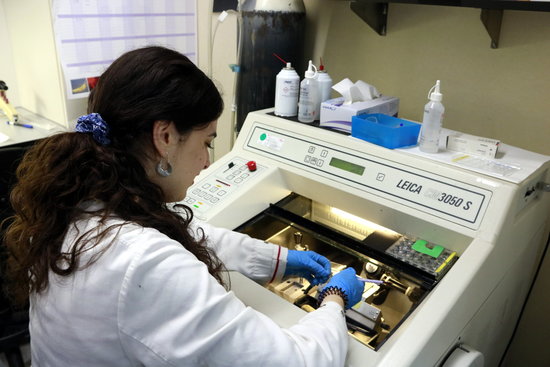Key neural processes in the onset of Parkinson’s disease discovered
Vall d'Hebron research center's discovery opens door to develop therapies to prevent degeneration

Scientists in Barcelona’s Vall d’Hebron hospital and medical research center have discovered that an accumulation of neurons that contain a dark pigment, known as neuromelanin, is a central element of the processes that produce Parkinson's disease. The research findings could lead to new therapies aimed at preventing the symptoms of the ailment.
Although the association between neuromelanin and Parkinson's disease has been known for a hundred years, until now the role of this pigment in the onset of the disease had not been formally described, since, unlike in people, the animals in the laboratory do not generate the pigment.
To study the animals, researchers from the Neurodegenerative Diseases group in the Vall d’Hebron Research Institute (VHIR) in Barcelona have developed models that produce neuromelanin which has allowed the scientists to see that the excessive accumulation of the pigment inside neurons produces Parkinson’s disease.
The findings were described in an article published in the magazine 'Nature Communications'. Researchers have also shown in an experimental model that modulating neuromelanin levels can prevent the degeneration of Parkinson's.
Genetic manipulation to overcome research obstacles
Since 1919 it has been known that neurons containing neuromelanin were those that degenerate when a patient had Parkinson's disease, but the exact role of this pigment was unknown until now.
Since the laboratory animals - rats and mice - do not have neuromelanin, the VHIR researchers have developed, by genetic manipulation, the first experimental animal model that produces and accumulates neuromelanin with age in a manner similar to humans.
"The main findings of our work is that the accumulation of neuromelanin above certain levels could be at the origin of Parkinson’s disease," explained Ariadna Laguna-Tuset, one of the researchers in the Vall d’Hebron team.
"Our work is of particular importance because for the first time we described that the modulation of neuromelanin could be a therapeutic strategy for Parkinson’s disease," she added.